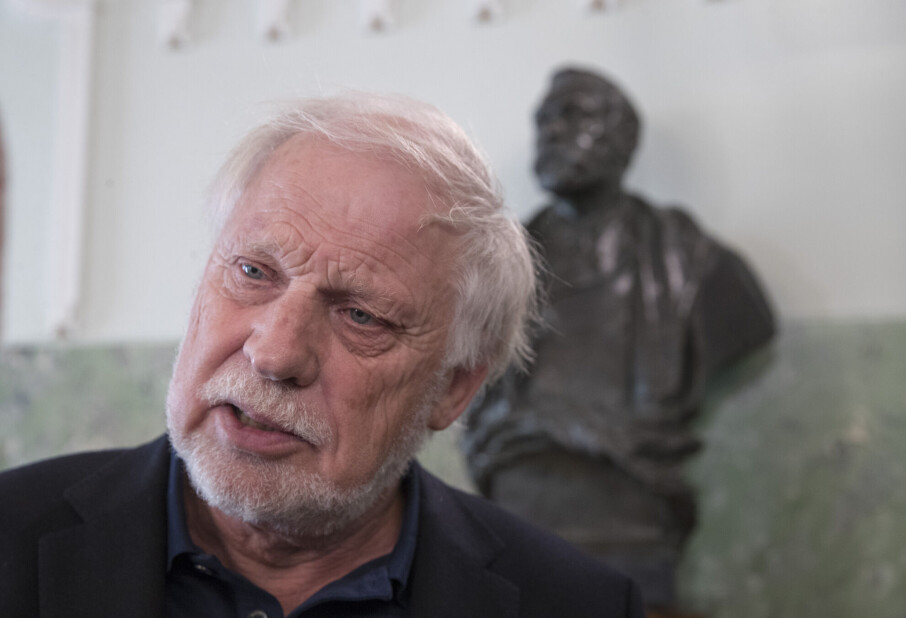
Winners of the Kavli Prizes 2014
Norway’s Thomas W. Ebbesen is among the winners of the prestigious Kavli Prize in Nanoscience. The three Kavli Prizes were awarded today. See all nine winners here.
Denne artikkelen er over ti år gammel og kan inneholde utdatert informasjon.
The Kavli Prize is awarded every other year through a partnership between the US-based Kavli Foundation, the Norwegian Academy of Science and Letters and the Norwegian Ministry of Education and Research. The prize consists of $1 million, a diploma and a gold medal in each of three fields.
The prize was first awarded in 2008 and is given on the basis of ground-breaking research in three fields: Nanoscience, astrophysics and neuroscience.
Here are this year's winners in the three categories.
Laureates in nanoscience:

The three winners are awarded the Kavli Prize for their important contributions to nano optics, which have challenged previous assumptions about the limits of microscope resolution and imaging techniques.
Thomas W. Ebbesen is a Norwegian physical chemist at ISIS in Strasbourg who gets the prize for his discovery that light can pass through openings which are smaller than the wavelength of light itself.
Prior to Ebbesen’s experimentation it was accepted that the light was dramatically reduced through apertures smaller than the light’s wavelength.
But Ebbesen’s experiment in 1998 challenged the earlier theories on how light behaves.

This effect was explained by the coupling of light with electronic excitations, called plasmons, in metal surfaces with nano-sized openings.
His research has enabled the fabrication of more precise optical sensors and contributed to making photonic systems – in which light carries information instead of electricity – more effective.
Stefan Hell is a German physicist whom the jury says has made seminal discoveries in the development of a fluorescence microscope with nano-resolution, facilitating nanoimaging which is highly useful in biological areas
Fluorescence microscopy uses fluorescent light rather than reflected light.

For 120 years science has reasoned that optical microscopes had a downward limit to viewing things that were less than half the wavelength of light.
Stefan Hell was able to disprove this by developing a way of controlling the diffraction in microscopic images on an extremely small scale.
This technology has made it possible to observe dynamic process in living cells on the nano level.
Sir John B. Pendry is a physicist at Imperial College in London.

He gets the prize for being a pioneer in metamaterials, which are substances with electromagnetic qualities not found in nature.
In 2000 he predicted that such materials can be used to in the creation of so-called perfect lenses, i.e., lenses with a resolution that is not limited by the wavelength of light, as is the case with normal lenses.
Laureates in astrophysics:
The prize for astrophysics is awarded for pioneer efforts involving the theory of cosmic inflation and is shared among three physicists.

The theory postulates that the universe expanded at an incredible velocity during the first instances after the Big Bang.
The three prize-winners have contributed new knowledge within the theory, which was initially launched in the West by the American laureate Alan H. Guth in 1980.
He is a theoretical physicist at the Massachusetts Institute of Technology (MIT).
Guth has researched many aspects of expansion, including an investigation of whether it is hypothetically possible to recreate this inflation in a laboratory, thus starting a new universe.

Andrei D. Linde is a Russian-American theoretician at Stanford University and is also considered to be one of the key authors behind the inflation theory.
He worked with models of the early moments of the universe in the 1970s, thus contributing to the theory.
Linde later made modifications of cosmic inflation theory to rectify some flaws and launched several variations of the theory.
Alexei A. Starobinsky is a Russian astrophysicist at the Landau Institute for Theoretical Physics who worked on the inflation theory in the Soviet Union in the 1970s, in parallel with Alan H. Guth.

He studied black holes and how particles were formed in the early universe.
This research led to the inflation theory.
Starobinsky, along with colleagues, also developed the theory of how quantum fluctuations from the early universe were expanded by inflation.
In accordance with the theory this explains the basis for large structures in the universe.

Laureates in neuroscience:
Three winners are sharing the honours in this category too. They have been awarded the Kavli Prize for their discoveries of specialised networks in the brain for memory and cognition.
The Canadian neuropsychologist Brenda Milner of McGill University has pioneered work toward medical science’s understanding of memory.
By studying patients with brain injuries and memory problems, Milner began speculating whether there are diverse types of learning and memory which are located in different regions of the brain.
Most renowned was the patient HM, who after brain surgery could no longer store new experiences in his long-term memory.
By studying this man and other patients, Milner found that specific regions of the brain are needed to form certain types of memories, now called episodic memories.
Other regions deal with further types of memories, including learned motor skills.
John O’Keefe is a professor of cognitive neuroscience at University College London.
He discovered that the hippocampus contains neurons that which are involved in determining and recognising where we are.
These nerve cells enable us to notice changes in our know surroundings and the neurons create a cognitive map that makes it possible for us to navigate.
This discovery was a decisive example of how neurons are involved in the creation of memory.
Marcus E. Raichle is a professor of radiology, neurology and anatomy at Washington University.
He developed methods for measuring brain activity, techniques which can measure the flow of blood and metabolism in limited areas of the brain.
These techniques formed the foundation for all modern studies using brain imaging.
The techniques have made it possible to link specific brain regions to activities such as reading, attention and memory.
------------
Read the Norwegian version of this article at forskning.no
Translated by: Glenn Ostling






























